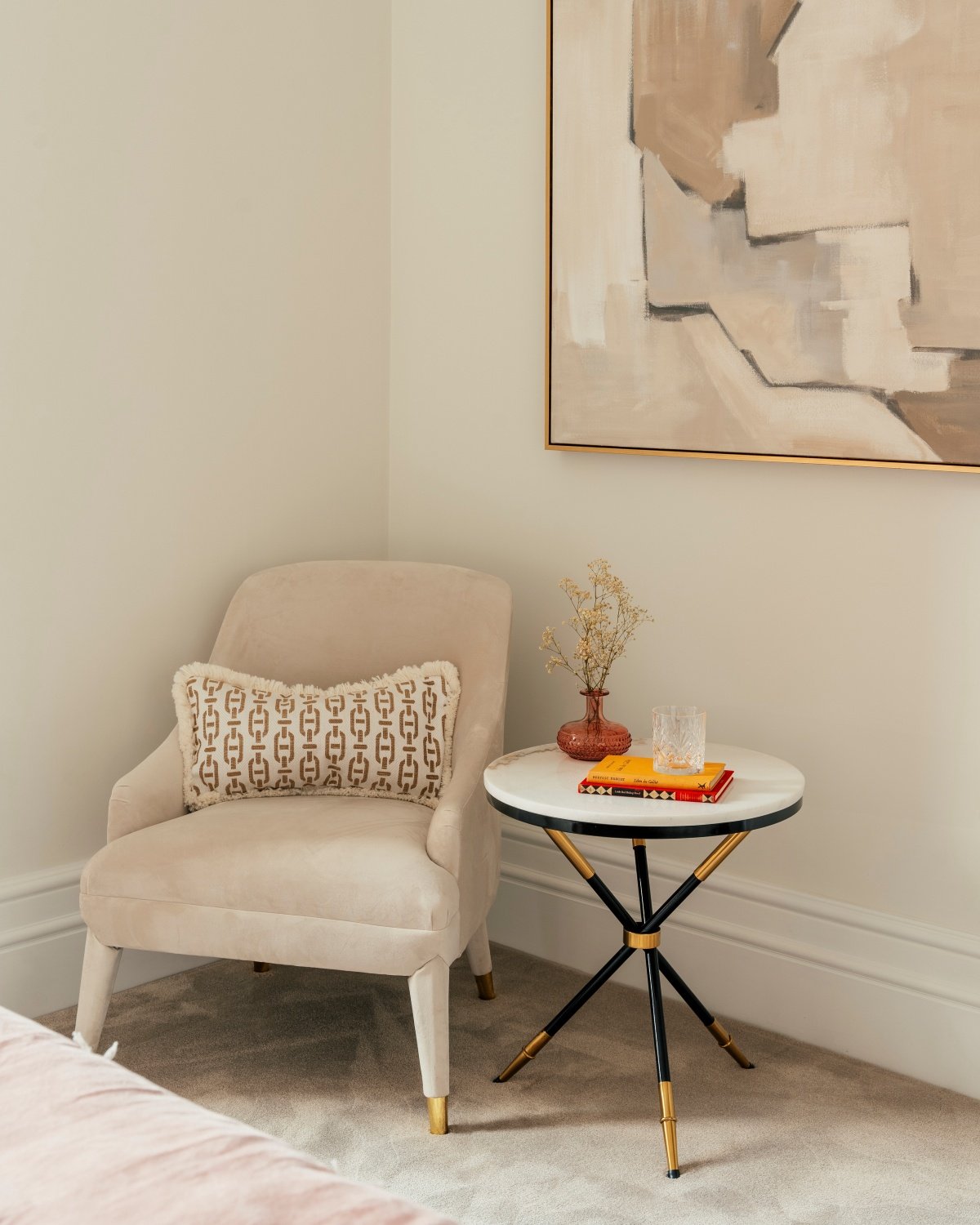How to design your bedroom for a good night’s sleep
Saffron Harper-Ward from Knight Frank Interiors shares her expert advice on creating a calming sleep environment

A good night’s sleep is not a luxury - it’s vital for both our physical and mental health. The NHS recommends a healthy adult aim for 7-9 hours per night, but with a number of factors including stress, anxiety and bad habits affecting our slumber it’s often easier said than done.
There’s plenty of ways to set yourself up for success by creating a calming environment that is conducive to winding down and getting a full night’s rest. Here Saffron Harper-Ward from Knight Frank Interiors shares her top tips for perfecting the décor of your bedroom, from choosing a tranquil colour palette to picking the right soft furnishings.
The right bed is essential
The right bed and mattress are key to both comfort and aesthetics. Choose a mattress based on your sleep position – medium/firm for back sleepers, softer for side sleepers and firmer for stomach sleepers. Memory foam and hybrid mattresses offer great support. To complement your design, opt for a bed frame that aligns with your style and consider bed height and proportions to ensure balance in the room.
Create darkness
Blackout curtains or blinds are essential to block out streetlights and early morning sun. Layering blackout curtains with sheer drapes gives flexibility, letting in daylight when needed while maintaining a cosy feel. For complete darkness, ensure curtains are wide enough to extend beyond the window frame and touch the floor.


Pick a calming colour palette
Soft, muted tones promote relaxation, with cool colours like pale blues, greens and greys helping lower heart rate and create a sense of calm. Meanwhile earthy neutrals such as beige, taupe and warm whites provide a cosy and grounding feel. Avoid overly bright or saturated colours which can be stimulating. If you love colour, opt for dusty pastel shades rather than bold, high-energy tones.
Carefully choose your lighting
Adaptable lighting is key. Use warm, dimmable bedside lamps for a soothing glow before bed, or soft overhead lighting with a warm white or amber tone (avoid cool blue lights which can disrupt melatonin production). Choose wall sconces or pendant lights for a modern, clutter-free look, while smart bulbs with dimming or colour temperature control offer customisable ambiance.
Selecting soft furnishings
When it comes to bedding, opt for breathable, natural fabrics like cotton or linen to regulate body temperature. Cushions, throws and layering with soft textures (wool, velvet, cashmere) adds comfort and visual warmth. Add a plush rug underfoot to enhance cosiness and absorb sound, making the room feel quieter and more restful.

Keep the room clutter free
A clutter-free bedroom creates a sense of order and calm. To achieve this, use hidden storage such as under-bed drawers and storage ottomans. Keep surfaces minimal by limiting bedside table items to essentials like a lamp, book and water glass. Organise your wardrobe by using storage baskets, dividers and declutter regularly to keep the space feeling open and airy.
Invite the outside in
Bringing nature indoors has a calming effect; consider using house plants such as lavender, peace lilies or snake plants to improve air quality. Natural materials such as wooden furniture, rattan and linen textiles further lend an organic grounding feel, while nature-inspired artwork or soft, botanical patterns add a subtle connection to the outdoors.
Perfect your routine
It’s important to find ways to relax, unwind and make the space as comfortable as possible. Remove screens at least an hour before bed to prevent blue light exposure, and consider using aromatherapy to promote a good night’s sleep, such as essential oils like lavender and chamomile. Keep the room cool (16-19°C is optimal for sleeping conditions), and incorporate meaningful, calming décor such as framed photos, soft artwork or a cosy chair to make the space feel inviting.




